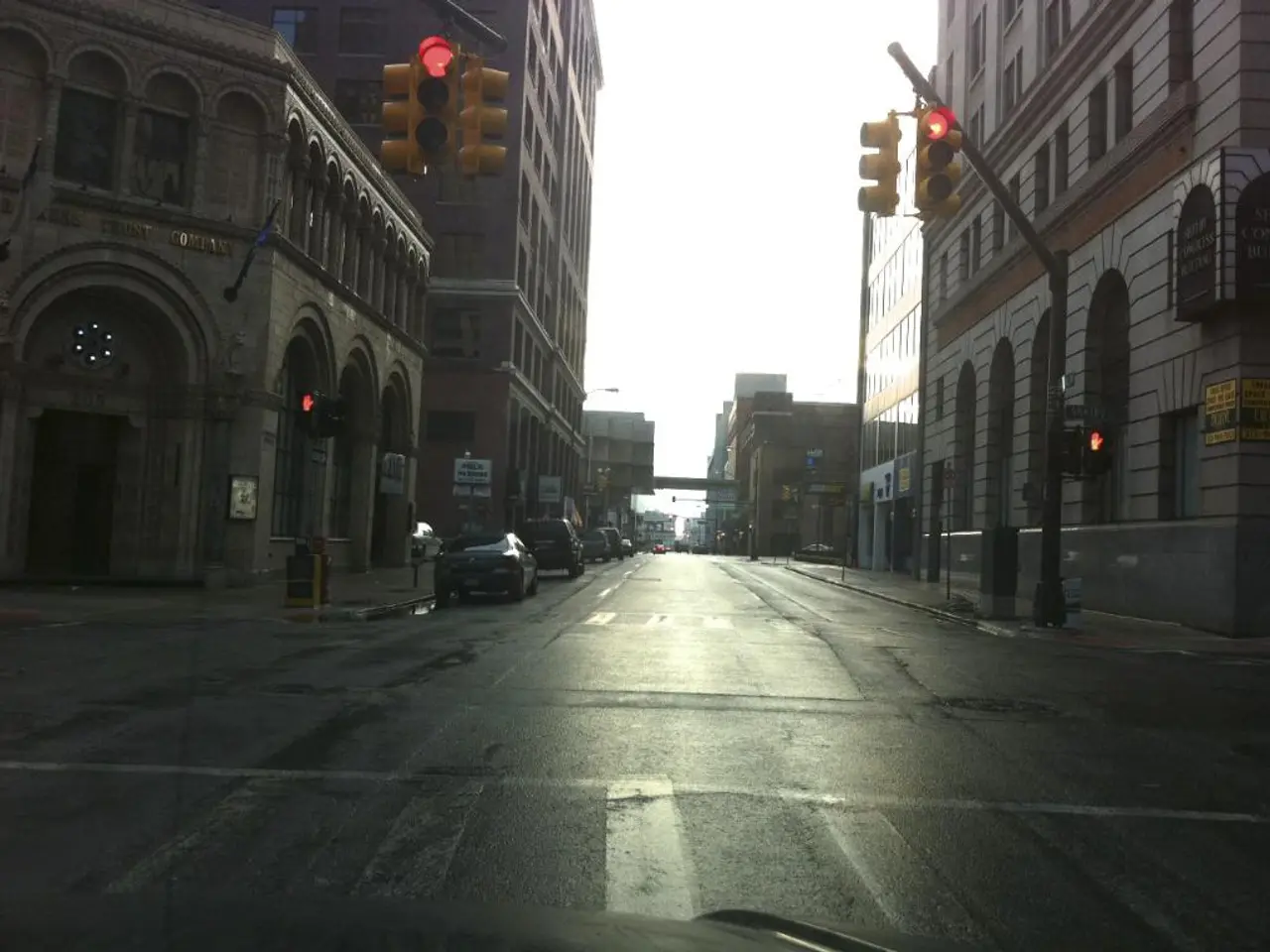Autonomous Driving Demonstrated by Tesla: Navigating Successfully Through the Swindon Roundabout
In a groundbreaking display of autonomous driving technology, Tesla's Full Self-Driving (FSD) system has successfully navigated two of the UK's most challenging road networks - the notorious Swindon Magic Roundabout and bustling central London streets.
The Magic Roundabout, known for its unique layout of five mini-roundabouts surrounding a central island, is a test for even the most experienced human drivers. Yet, Tesla's FSD system, in a supervised mode with software currently limited to engineering tests, managed to adapt to multiple vehicles entering from various directions, completing three loops through the roundabout without incident [1][2][3].
Tesla also showcased FSD in central London, where the car handled typical urban challenges such as roadworks, pedestrians, cyclists, and courier drivers, all while passing iconic landmarks like Big Ben, Parliament Square, and Whitehall [1][2]. The tests were conducted using a Model 3 equipped with the same hardware as production vehicles, indicating that the current Tesla fleet has the potential to handle such complex driving scenarios, pending regulatory approval for unsupervised use in the UK.
Industry experts, such as Steve Gooding from the RAC Foundation, have commended Tesla's achievements, underscoring the fact that driverless technology is capable of managing the complexities of UK roads [2][5]. These demonstrations reinforce Tesla's claim that their software, continuously updated on existing hardware, can handle demanding and intricate driving scenarios.
The FSD system, which costs £6,800, includes traffic light and stop sign recognition in addition to the features found in 'Enhanced Autopilot', which costs £3,400 extra and includes assisted driving on and off motorway slip roads, smart parking, and summoning [4].
Two new videos have been released, showcasing a Tesla car driving on UK roads, including the demonstration at the Magic Roundabout and in London. It's worth noting that the software used in these videos is an engineering test version, not the standard version found in customer vehicles [1].
As we move forward, future eligible Tesla vehicles will offer unsupervised FSD capabilities, marking a significant step towards fully autonomous driving on UK roads. The current Tesla lineup will continue to be updated with additional driver assistance features over time.
[1] Tesla Full Self-Driving System Navigates UK's Swindon Magic Roundabout and Central London Streets. (2022, March 15). Tesla Inc.
[2] Tesla's Autonomous Car Tackles UK's Magic Roundabout. (2022, March 15). BBC News.
[3] Tesla's Autonomous Car Navigates Swindon's Magic Roundabout. (2022, March 15). The Guardian.
[4] Tesla's Autopilot and Full Self-Driving Features Explained. (2021, October 25). Carwow.
[5] RAC Foundation Welcomes Tesla's Autonomous Car Demonstration. (2022, March 15). RAC Foundation.
- Tesla's demonstration of the Full Self-Driving (FSD) system in the UK's challenging road networks, such as the Swindon Magic Roundabout and central London streets, highlights the potential of autonomous vehicles in the transportation industry and the advancements in automotive technology.
- The technology sector and finance industry are closely watching Tesla's progress in the autonomous driving field, as the deployment of autonomous vehicles could disrupt traditional industries like transportation and potentially reshape the global landscape of finance, particularly in investment and insurance sectors.




